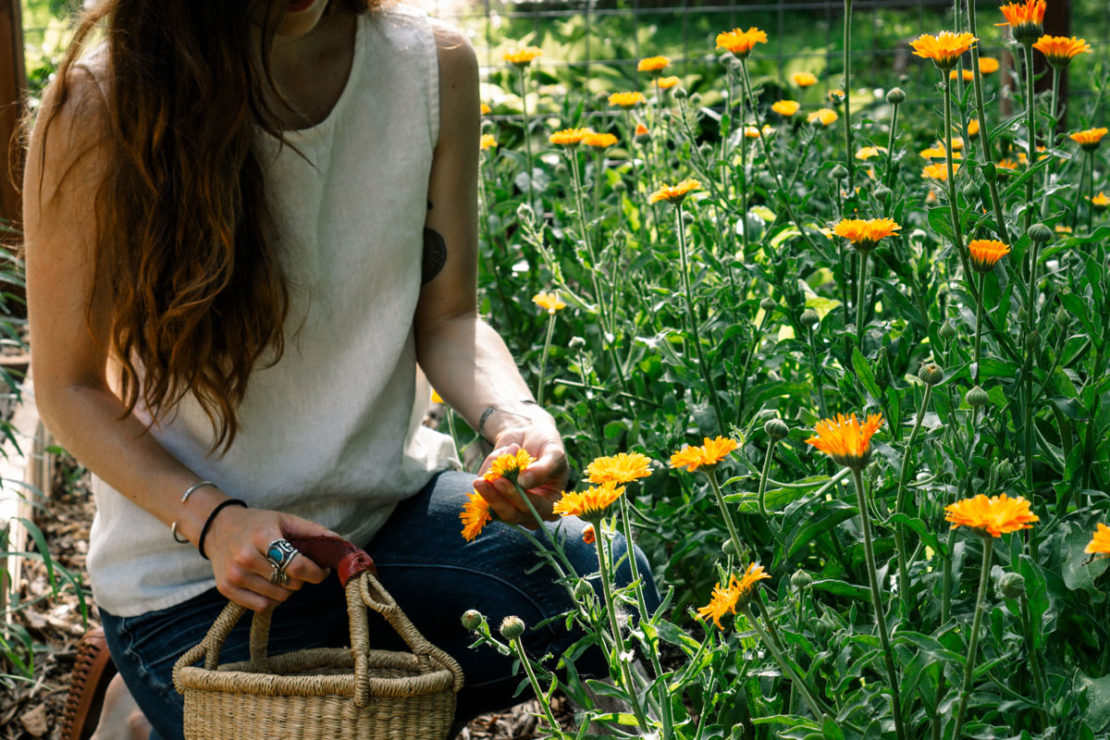
7 Best Plants for a Beginner’s Herb Garden
Growing your own herbs is a time-tested way to deepen your relationship with the plants in your apothecary. I’ll never forget the first time I brushed against sage (Salvia officinalis) in my own garden and was surprised at how cool the velvety leaves felt against my skin. Later, when I learned that sage is often used by herbalists to cool hot flashes, I remembered the herb’s refreshing touch and I was able to forge a connection between my personal experience and what I’d read. Fortunately, you don’t need to be an experienced gardener to start growing your own herbs. In this article, I’ll share seven easy-to-grow and useful herbs for a beginner’s herb garden, along with tips for using and growing each one.
I’ve been growing my own herbs for about 10 years, and I’ve had a number of successes and just as many failures! You will inevitably make mistakes. Just keep in mind that gardening is a life-long learning experience and failure is part of the process. Some people are born with green thumbs, but many others (myself included!) develop them after years of trial and error.
Know Your Growing Zone

The very first step in planning any garden is to identify your growing zone so you can choose plants best suited to your climate. The world is divided into “Hardiness Zones” based on coldest average winter temperatures. (To find your Zone, click here and type in your Zip Code to find out which zone you live in.)
Why is this important? On the back of a seed packet, you’ll often see a line that says something like “Hardy to zone 7.” This means the plant will survive winters up to zone 7, but any farther north it will likely succumb to frost. For example, Strictly Medicinal Seeds lists passionflower (Passiflora incarnata) as “Hardy in zones 6-12.” This means passionflower is hardy enough to survive the winters and grow as a perennial in zones 6-12, but if grown any farther north than zone 6 it will likely die after the first frost if it’s not covered or brought indoors.
I’ve included hardiness zones for each of the plants in this article, so before you continue reading, you may want to take a moment to identify your zone if you don’t already know it.
7 Easy-to-Grow and Useful Herbs
The United States is massive, and plants like aloe (Aloe barbadensis), rosemary (Salvia rosmarinus) and eucalyptus (Eucalyptus spp.) may thrive year-round in California or Florida, but they’re difficult (and in some cases impossible) to grow outdoors in Maine or Vermont. Fortunately, there are many useful herbs that do grow well in all but the most extreme U.S. climates. These easy-to-grow and resilient plants are ideal for a beginner’s herb garden.
In order to make this list, I only selected herbs that are extremely useful for a variety of reasons. There aren’t any one-hit wonders here—only versatile herbs that contribute to a well-rounded apothecary garden—covering everything from wound mending and fever reduction, to kitchen magic and pollinator favorites.
Chives (Allium schoenoprasum)
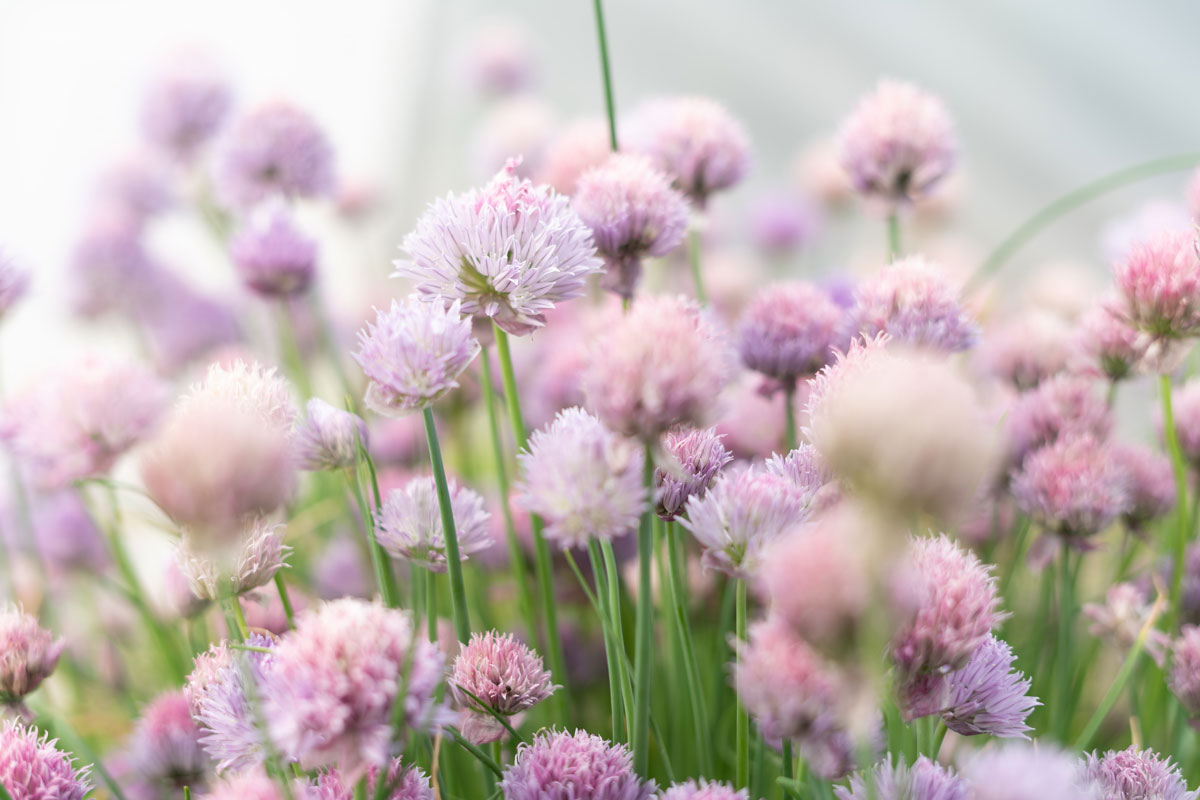
Chives (Allium schoenoprasum) are the most kitchen-friendly herb in this lineup, and their garlic-flavored stems and purple blossoms shine in herb-infused vinegar and edible oils. These concoctions are unforgettably delicious when used in salad dressing or marinades. As a gift, put them in a nice glass bottle with a unique label for friends and family members who may be intimidated by lesser-known herbal products, like tinctures.
Chives are in the onion family, and because they’re perennial they will come back year after year. They grow in clumps 12-24 inches tall that can be divided every few years for more growth. Chives are hardy in zones 3-10 but can be dug up and overwintered indoors in colder climates. As an added bonus, chive blossoms are a truly beautiful herald of early spring that will attract pollinators to your little patch of paradise!
Chives can be started from seed—either direct sow outdoors as soon as the soil is workable in very early spring or start seeds under grow lights 8-10 weeks before your average last frost. However, because chives are readily available at most nurseries, it’s much easier to get started with an established seedling from a local nursery. Chives grow well in many different conditions, but they prefer full sun and rich, well-drained soil.
Try not to harvest your chives too aggressively in the first year. Instead, keep them well-watered while they become established. Starting in the second year, you can regularly harvest chives by snipping the stems with garden shears a few inches from the base.
Yarrow (Achillea millefolium)
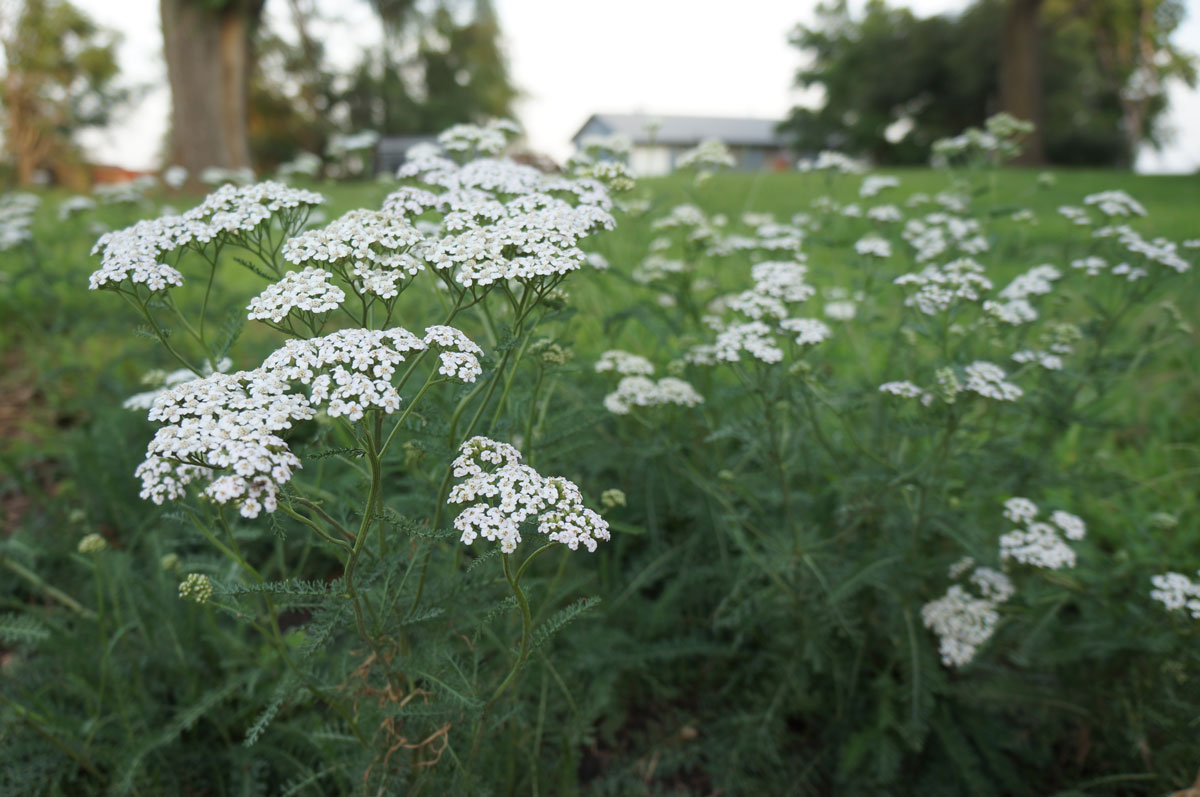
Yarrow (Achillea millefolium) is a graceful, useful, and hardy addition to a beginner’s herb garden. This perennial has a wide variety of uses—both internally and externally—and a long history of being included in apothecary gardens. For many herbalists, the first two things that come to mind for yarrow are wound mending and fever reduction. Learn more about yarrow’s beneficial properties in Adding Yarrow to Your Materia Medica and Yarrow as a Natural Remedy for Fever and Flu.
There are many varieties of decorative yarrow available at nurseries and in seed catalogs, but the simple white yarrow is what’s traditionally used by herbalists. This drought-tolerant perennial is native to the prairies of the northern hemisphere and is hardy in zones 3-9. Yarrow is drought-tolerant, which helps explain why it prefers to grow in dry, well-drained soil and full sun.
You can start yarrow from seed fairly easily by either direct sowing the seeds into your garden after all danger of frost has passed, or by starting the seeds indoors about six weeks before your average last frost (my preferred method). The seeds are “light-dependent germinators.” That means they need light to germinate and should only be sprinkled and pressed firmly on top of the soil, not covered with dirt or poked in too deeply (Carpenter, 2015). Keep the soil moist until germination, which takes 7-14 days, then thin your yarrow seedlings to about 12-inches apart. If you start yarrow seedlings indoors, then transplant them outside after all danger of frost has passed. With time, the yarrow will fill in and make a dense, green patch that you and the butterflies can look forward to seeing year after year.
Try not to harvest your yarrow too aggressively in the first year; instead let it focus its energy on growing a deep root system. In the second year and thereafter, harvest the aerial parts of yarrow in the early stages of blooming by using sharp shears to cut a few inches from the base.
Yarrow seeds are available via Strictly Medicinal Seeds, Fedco, Richters, and other online seed suppliers.
Peppermint (Mentha x piperita)
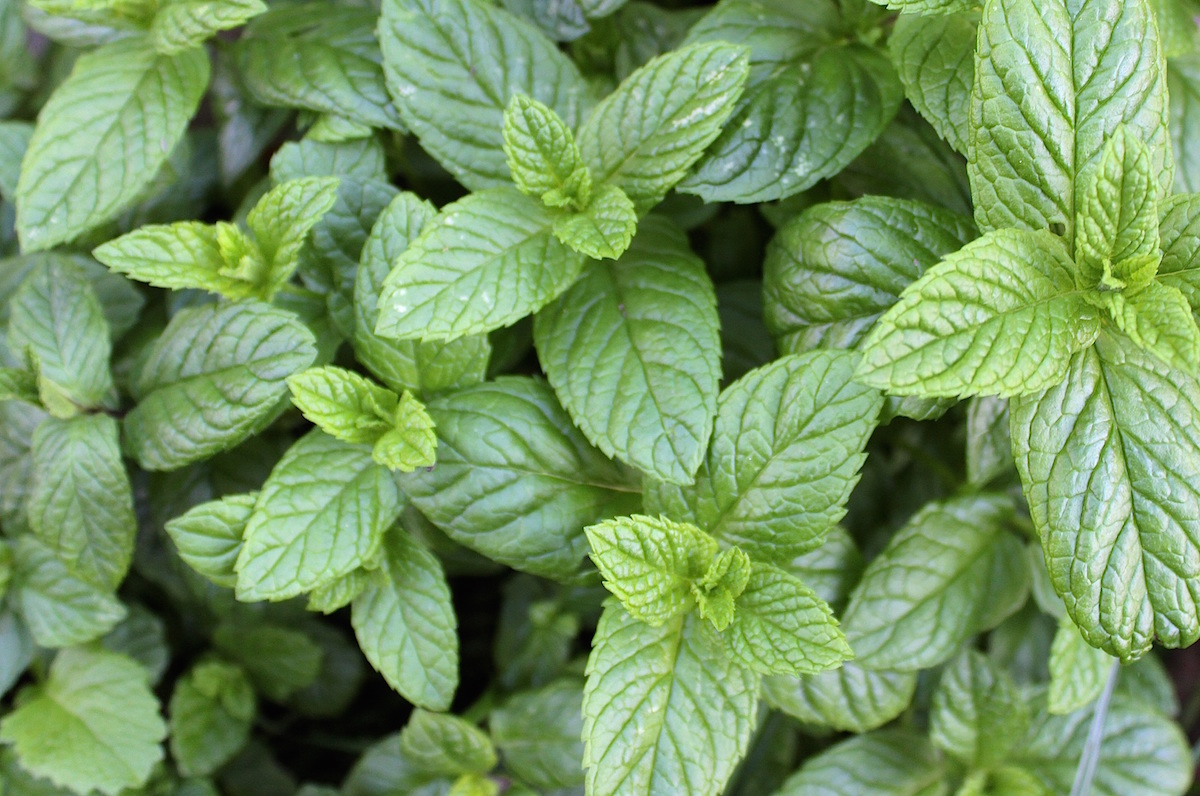
Peppermint (Mentha x piperita) is another great choice for a beginner’s herb garden, and it has many uses both in the apothecary and the kitchen. My favorite way to use peppermint is also the easiest—tea! Peppermint’s refreshing and uplifting flavor is super useful for masking less-palatable or bitter flavors. You can use peppermint in tinctures, vinegars, or infused oils, and in the kitchen it shines when blended into smoothies, salads, pestos, and desserts. It’s traditionally thought of as a digestive aid that can help soothe nausea (Lane et al., 2012) and headaches (Kligler, B. & Chaudhary, S., 2007).
Because peppermint is a hybrid, it’s best to grow it from an established cutting rather than starting it from seed. If you visit your local nursery, you’ll quickly see that there’s a huge number of peppermint varieties to choose from, including lemon and chocolate flavors. However, the traditional and simple peppermint (Mentha x piperita) is what herbalists use most. In many cases, peppermint can be swapped with spearmint (Mentha spicata), which is better suited to hot climates.
Peppermint is hardy in zones 3-7, and spearmint is hardy in zones 4-11. In the wild, these plants grow along streambanks. When growing them in your home garden, try to replicate these conditions by providing plenty of water, rich soil, and full sun to partial shade. Space your peppermint or spearmint plants 18-24 inches apart. Both of these plants can spread rapidly and to the point of being invasive, so give them a dedicated space in your garden or grow them in containers. Peppermint and spearmint are both perennials, so they should come back year-after-year without any additional work on your end – win!
Elder (Sambucus nigra, S. canadensis, or S. cerulea) berry and flower
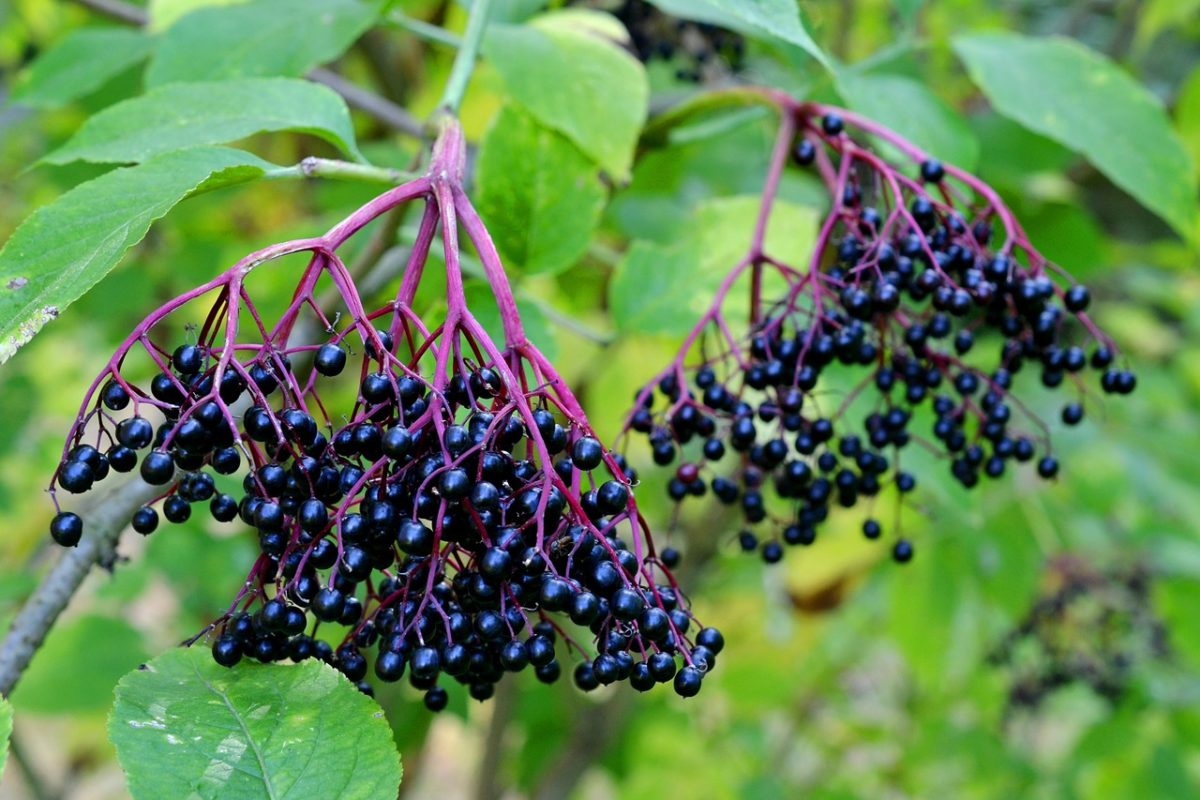
Elderberry syrup is one of the first introductions to herbalism that many people experience. It has been used for centuries to help boost the immune system at the first signs of a cold or flu, and elder (Sambucus nigra, S. canadensis, or S. cerulea) is often referred to as “the medicine chest for the country people.” The syrup features elderberries, but elderflowers are also useful and are a star ingredient in beloved elderflower cordials, fever-reducing teas, and more. Long revered as a magical and sacred plant, elder is a wonderful addition to a beginner’s herb garden.
Elder is actually a tall shrub or short tree that can easily reach 15-30 feet tall. For this reason, many gardeners choose to plant it along their fence line or against a garage or shed rather than directly in the garden where it could shade out other plants. American elder (Sambucus canadensis) is native to eastern North America and is closely related to European black elder (Sambucus nigra). On the west coast, you’re more likely to see blue elderberry (S. cerulea), that has dark blue, waxy berries.
In the U.S., elder can often be found growing in moist soil along roadsides, fields, and brooks, so you can probably forage it nearby if you don’t have space to grow it in your garden. However, having an abundant supply of elderberries and flowers in your own backyard to share with family, friends, and fellow herbalists is a true luxury!
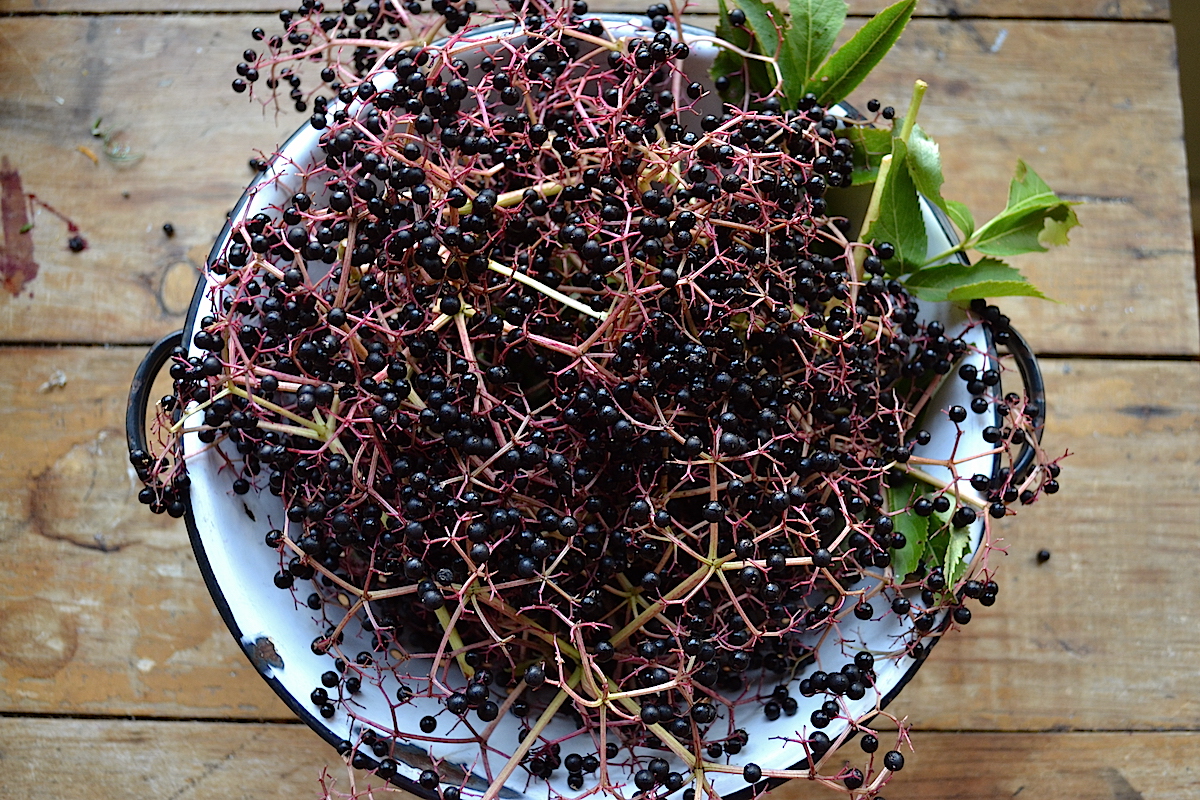
Resilient elder (Sambucus spp.) is hardy in zones 3-10 and likes to grow in moist, well-drained soil in full sun to partial shade. It’s best to grow at least two or three elderberry bushes near each other (about 60 feet apart) to increase germination rates, which will give you more flowers and berries.
It’s possible to grow elder from seed if you have a lot of patience, but it’s easier and faster to purchase an established sapling from an online or local provider. Even better, call an herbalist friend who will let you dig up some of theirs! Elder spreads by root suckers, so you’ll want to prune them back occasionally or dig them up and share them with fellow gardeners. After your elder is established, you can harvest the white, umbel-shaped flowers in early summer and the delicious blue or purple berries in late summer/early fall. (If you see an elder with red berries, then bewarned, it may be the poisonous S. racemosa.)
Pro tip: Birds love elderberries as much as we do, so you may want to consider tossing bird netting over your trees right around the time your berries ripen to make sure you enjoy the harvest as well!
Calendula (Calendula officinalis)
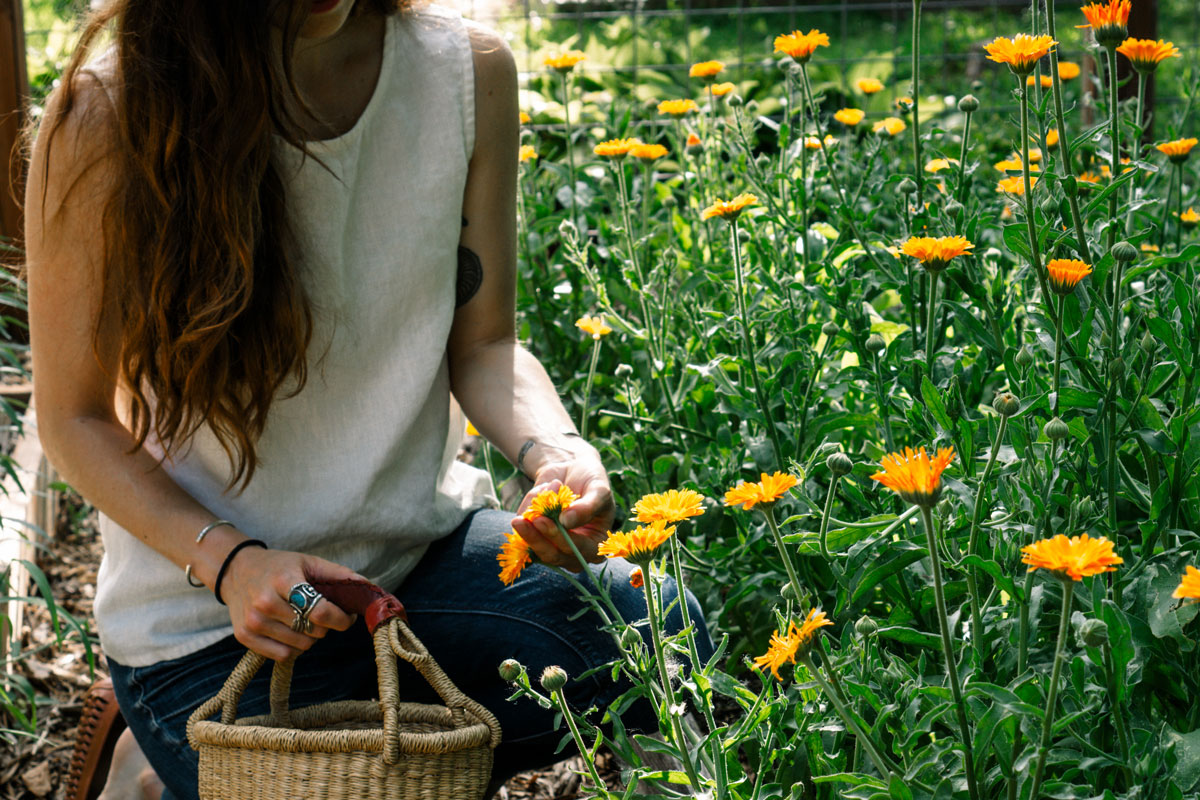
I’m truly smitten with sunny calendula (Calendula officinalis), and I believe it has earned a spot in every beginner’s herb garden. Calendula flowers (specifically the petals) are used in teas, tinctures, and infused oils. This cheerful yellow flower is a powerful vulnerary (wound-healing) herb that’s traditionally used to soothe and mend cuts, burns, bites, rashes, sprains, and other abrasions. That’s why you see calendula-infused oil used as a base in so many summer salve, lotion, and soap recipes!
Internally, many herbalists use calendula tinctures and teas to support the gallbladder, liver, and digestive system, especially in instances where inflammation is present, like with ulcers (Hoffmann, 2003). Calendula flowers are also edible and can be sprinkled on summer salads, frozen into decorative ice cubes, and enjoyed as a seasonal garnish. Learn more about this delightful herb in Calendula Uses: Our 14 Favorite Recipes and Remedies and A Family Herb: Helpful Calendula Blossoms.
Calendula is easy to start from seed. You can either sow the seeds directly in your garden after all danger of frost has passed, or you can start the seeds indoors 4-6 weeks before your average last frost and then transplant the seedlings outdoors when all danger of frost has passed. Poke the seeds about ¼-inch into the soil, and keep the soil moist until the seeds germinate. Calendula plants should be planted or thinned about 12 inches apart in a sunny location with rich, well-drained soil.
Harvesting calendula is such a joy! Every few days, simply pinch the cheerful golden flowers off the stalk in the early morning with your fingers or garden shears. Calendula is generous, and the more flowers you harvest, the more it will produce. So don’t be shy with your calendula harvest; I like to go out every morning with my cup of coffee and harvest the daily flush of sticky, resinous flowers.
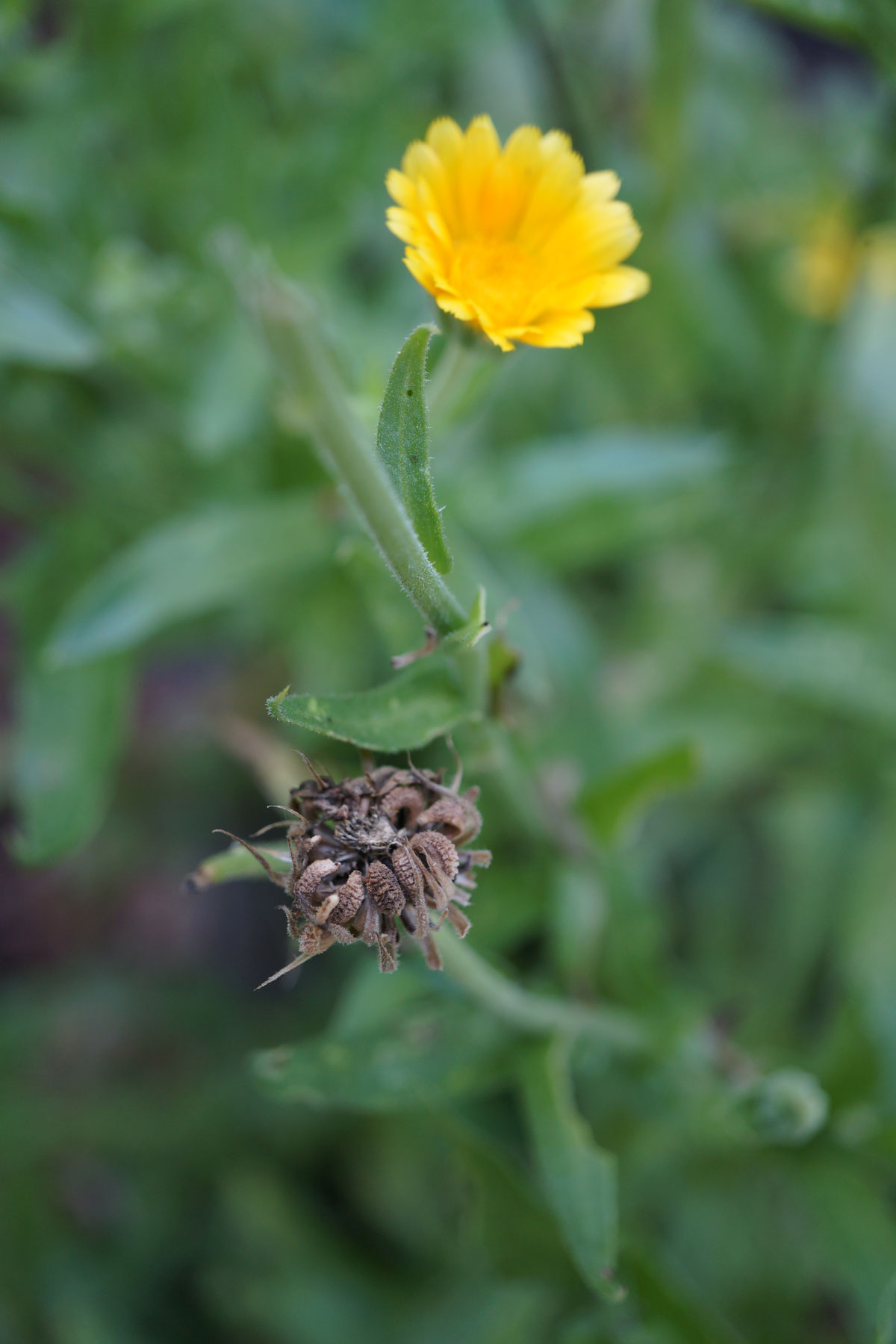
Calendula is what’s called a “self-seeding annual,” and it offers a wonderful introduction to seed saving. Toward the end of summer, slow down on your calendula harvests and leave the flowers on the stalks so they can start developing seeds (pictured above). Before your first frost (and before the birds can eat them!) pull the seeds from the seedheads and tuck them into the soil to ensure next year’s crop. If you have a lot of birds in your area, then consider covering your calendula flowers with bird or insect netting in late summer so the seeds can develop without being eaten up.
Like yarrow, there are many cultivated varieties of colorful and ornamental calendula. Stick with Calendula officinalis for your apothecary garden. I’ve had success with calendula seeds from both Strictly Medicinal Seeds and Fedco. Richters is a great option for Canadian herbalists.
Tulsi (Ocimum spp.)
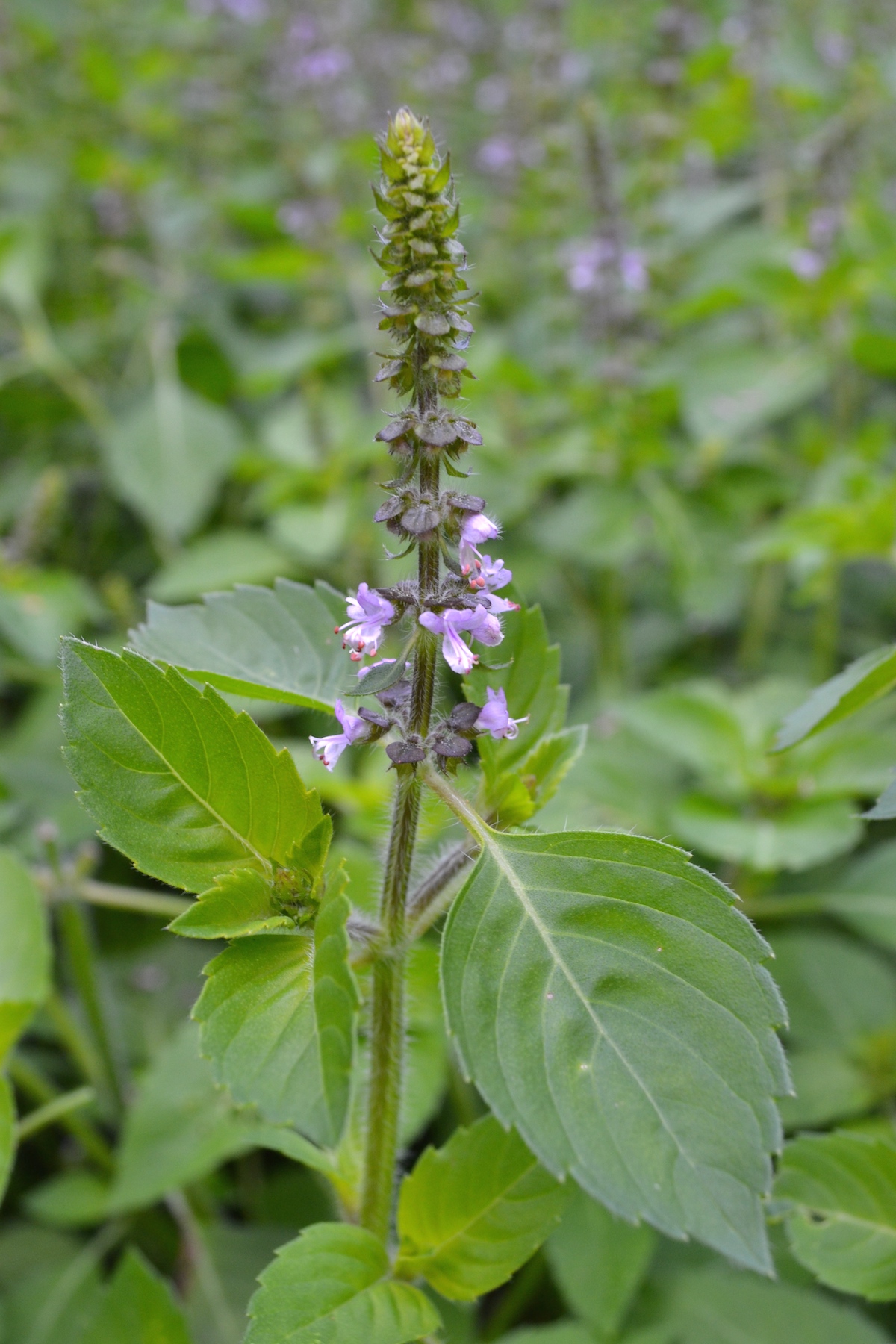
Tulsi, also known as holy basil (Ocimum spp.), is a delicious adaptogenic herb that is particularly well-suited to teas. Tulsi has a long history of use for respiratory imbalances due to its antiviral, antibacterial, decongestant, and diaphoretic actions (Wood, 2008). In its homeland of India, tulsil is considered holy (hence the common name “holy basil”) and it’s often grown in pots near the home’s entry. See 7 Ways to Use Tulsi Every Day for more information in this extremely useful, aromatic herb.
Tulsi grows as a perennial in India and in the warmest U.S. hardiness zones 10-12. However in colder climates, including most of the United States, it’s grown as a self-seeding annual that dies back after the first frost.
There are many varieties of tulsi, but the variety that many gardeners, including myself, have had the most luck growing is temperate tulsi (Ocimum africanum). This variety has green leaves and purple aromatic flowers. I’ve been amazed at its vigor in my zone 6 garden, and the more I harvest, the more it grows back! Like calendula, it will self-seed for a fresh crop next year that requires very little work on your end.
Tulsi is easily started from seed. If you’re sowing the seeds directly into your garden, then poke them about 1/4-inch into the soil in late fall or early spring, cover, and pat into place. You can also start your seeds indoors 4-6 weeks before your average last spring frost. Thin or transplant your seedlings to approximately 24-inches apart. Tulsi prefers full sun and regular, well-drained soil. To harvest, use gardening shears to cut the top 4-6 inches of the plant.
I sourced my first crop of tulsi (holy basil) seeds from Strictly Medicinal Seeds, and they’ve been reliably self-seeding each year since.
California poppy (Eschscholzia californica)
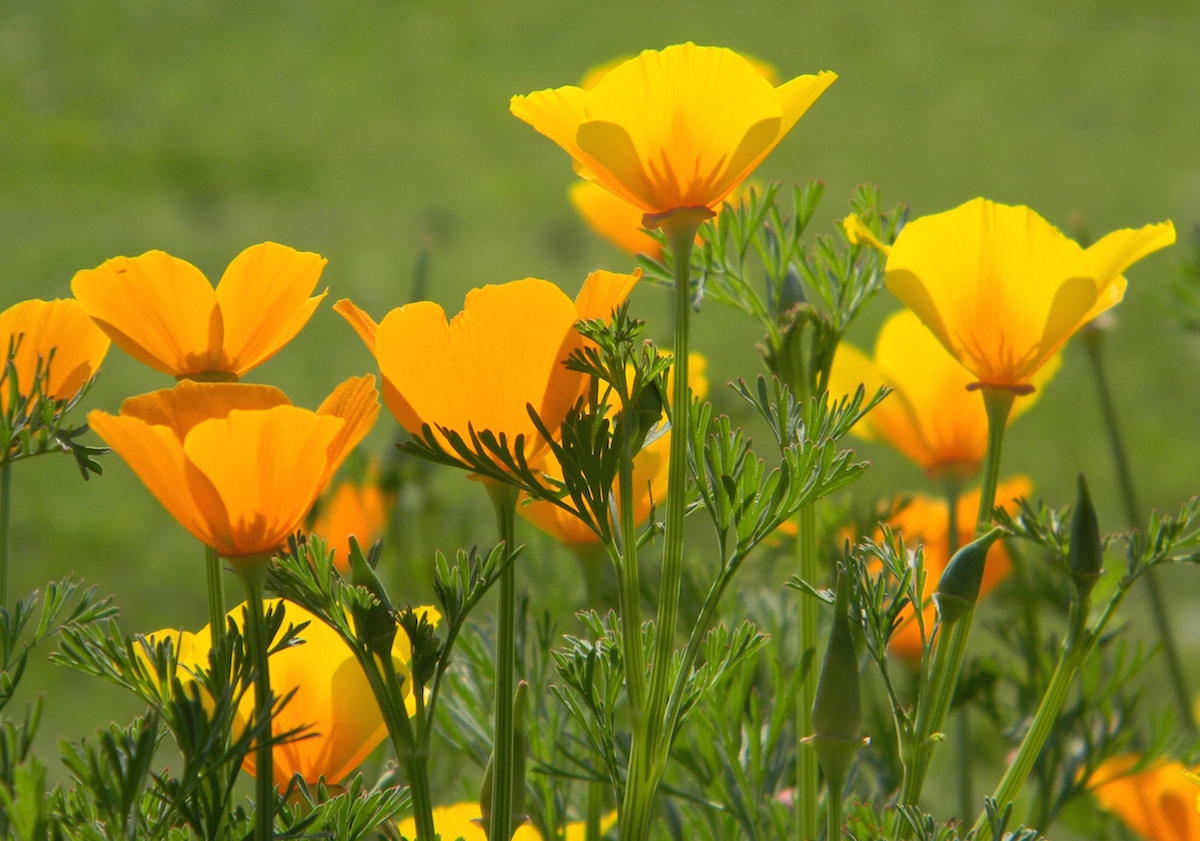
California poppy (Eschscholzia californica) is calming and sedating, which is why many herbalists incorporate it into tinctures to support sound sleep. This cheerful orange perennial is a nonaddictive cousin of the opium poppy (Papaver somniferum), and, like its cousin, it has analgesic (pain-soothing) properties (Mars, 2001). This time-tested herb is safe enough for children and is most often used in teas and tinctures.
Although California poppies look delicate, they’re actually a rugged, drought-tolerant plant that thrives in rocky or sandy soil that’s well drained and in full sun. California poppies are grown as annuals in zones 1-7 but will survive as short-lived perennials in warmer zones 8-10. These plants are easy to start from seed and can be sown directly in the garden in either late fall or early spring. Simply scatter the seeds on disturbed soil and pat them in place. Don’t worry about thinning them out after they germinate in early spring. Simply keep them well-weeded and watered as they fill in.
Harvest poppy leaves and flowers in the early morning when the plant is in full bloom. Use a field knife or garden shears to harvest the top 6-10 inches of the plant, including the flower. Tincture the fresh plant or dry it on racks for later use.
California poppy seeds are available from Strictly Medicinal Seeds, Johnny’s Selected Seeds, and other online suppliers. If you visit a garden center, this seed is usually stocked with ornamental flower seeds.
Don’t Forget the Weeds!
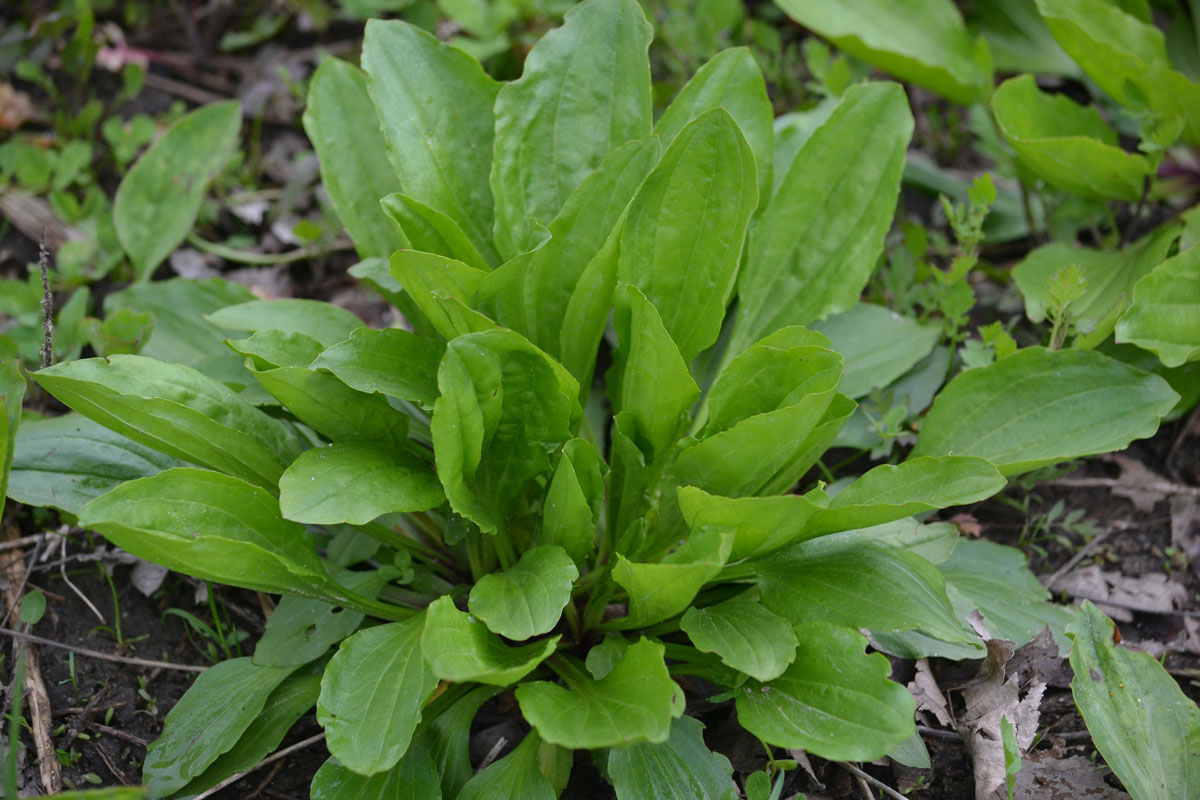
One of the easiest ways for beginning gardeners to get the most bang from their backyard buck is to simply pay more attention to the “weeds” that are already growing there. Take a closer look to see whether you have plantain (Plantago spp.), violet (Viola spp.), chickweed (Stellaria spp.), dandelion (Taraxacum officinale), cleavers (Galium aparine), and other useful herbs already at your fingertips. By observing the useful plants that are already at home in your backyard, you will also be able to learn more about your local growing conditions and which types of plants thrive in your very specific backyard climate.
Next Steps for Beginning Gardeners
The easy-to-grow, versatile herbs included in this article are meant to get your feet wet regardless of where you live in the U.S. After you gain a bit of experience, you can expand your garden by researching the plants that are native to your region. These plants are already adapted to your specific climate, so they’ll likely grow well in your garden. Befriending nearby gardeners and herbalists will also help your garden grow – there are always seeds, sprouts, and bulbs to be shared!
Gardening Books
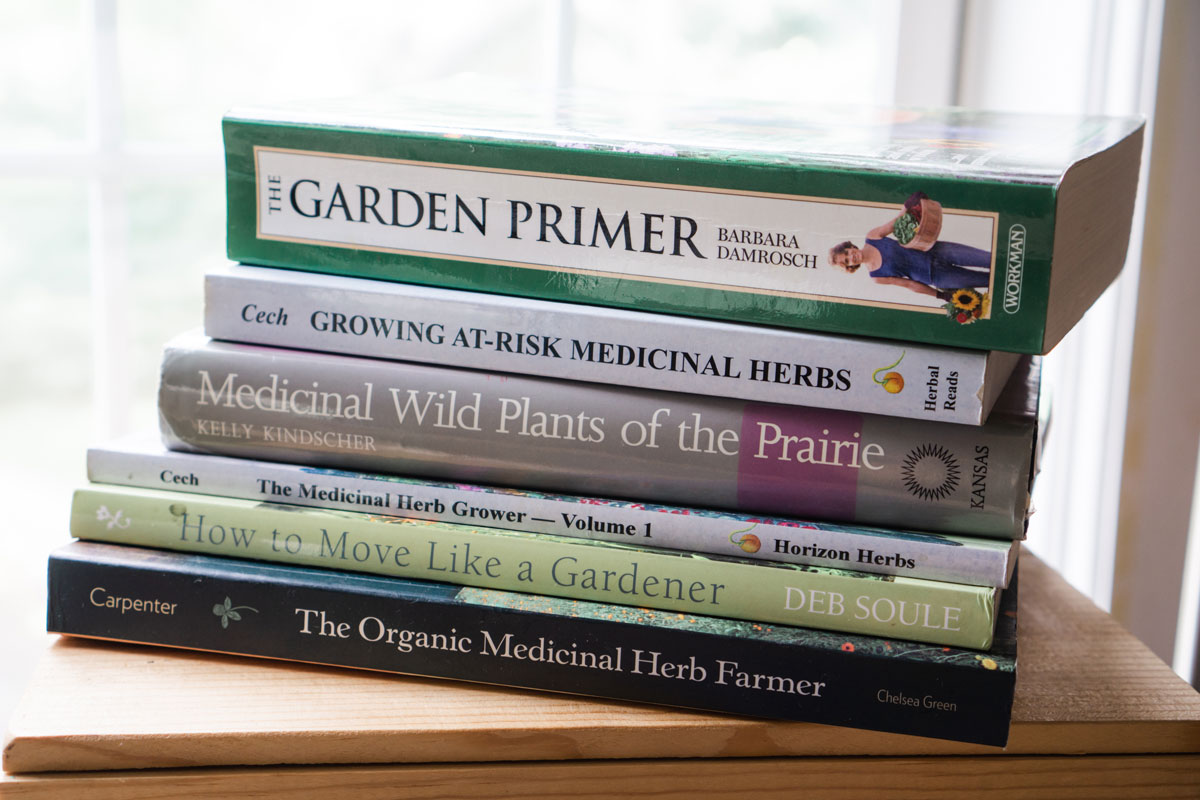
All Growing Zones
- The Garden Primer by Barbara Damrosch
- Grow Your Own Herbal Remedies by Maria Noel Groves
- The Organic Medicinal Herb Farmer by Jeff and Melanie Carpenter
- Growing At-Risk Medicinal Herbs by Richo Cech (Founder of Strictly Medicinal Seeds)
- The Medicinal Herb Grower by Richo Cech
- Backyard Medicine by Julie Bruton-Seal and Matthew Seal
- How to Move Like a Gardener by Deb Soule
Northeast
- Growing and Marketing Ginseng, Goldenseal, and Other Woodland Medicinals by Jeanine Davis and Scott Persons.
- The Medicinal Forest Garden Handbook by Anne Stobart
Midwest
- Medicinal Wild Plants of the Prairie by Kelly Kindscher
Rocky Mountains
- Mountain States Medicinal Plants by Briana Wiles
Pacific Coast and Northwest
- Medicinal Plants of the Pacific West by Michael Moore
- A Peterson Field Guide to Western Medicinal Plants and Herbs by Stephen Foster and Christopher Hobbs
- Pacific Northwest Medicinal Plants by Scott Kloos
Southwest
- Medicinal Plants of the American Southwest by Charles W. Kane
- Medicinal Plants of the Desert and Canyon West by Michael Moore
- Southwest Medicinal Plants by John Slattery
For more helpful book recommendations, see Herbal Academy’s Herbal Bookshelf.
In Closing,
Starting a beginner’s herb garden is a wonderful step toward kindling a deeper relationship with the plants in your apothecary. Before you know it, you may find yourself knee deep in the compost pile gleefully harvesting cleavers and thanking the earthworms for their hard work!
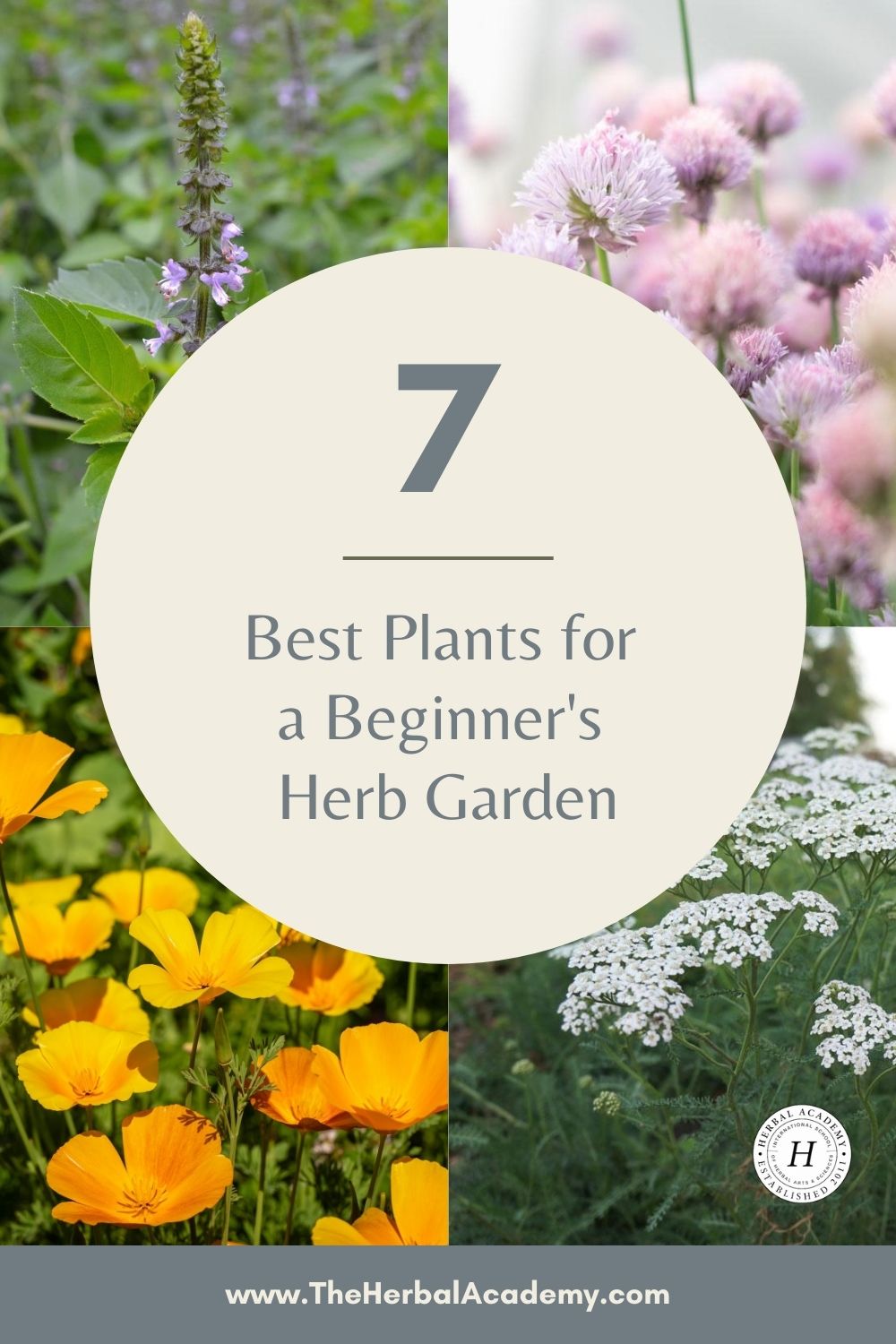
REFERENCES
Hoffmann, David (2003). Medical herbalism. Rochester, VT. Healing Arts Press.
Kligler, B., & Chaudhary, S. (2007). Peppermint oil. In American Family Physician, 75(7) (pp.1027-1030).
Lane, B., Cannella, K., Bowen, C., Copelan, D., Nteff, G., Barnes, K.,…& Lawson, J. (2012). Examination of the effectiveness of peppermint aromatherapy on nausea in women post C-section. Journal of Holistic Nursing, 30(2), 90-104.
Mars, B. (2001). Addiction-free naturally: Liberating yourself from sugar, caffeine, food addictions, tobacco, alcohol, prescription drugs. Rochester, VT: Healing Arts Press.
Wood, Matthew. (2008). The earthwise herbal: A complete guide to old world medicinal plants. Berkeley, CA: North Atlantic Books.







